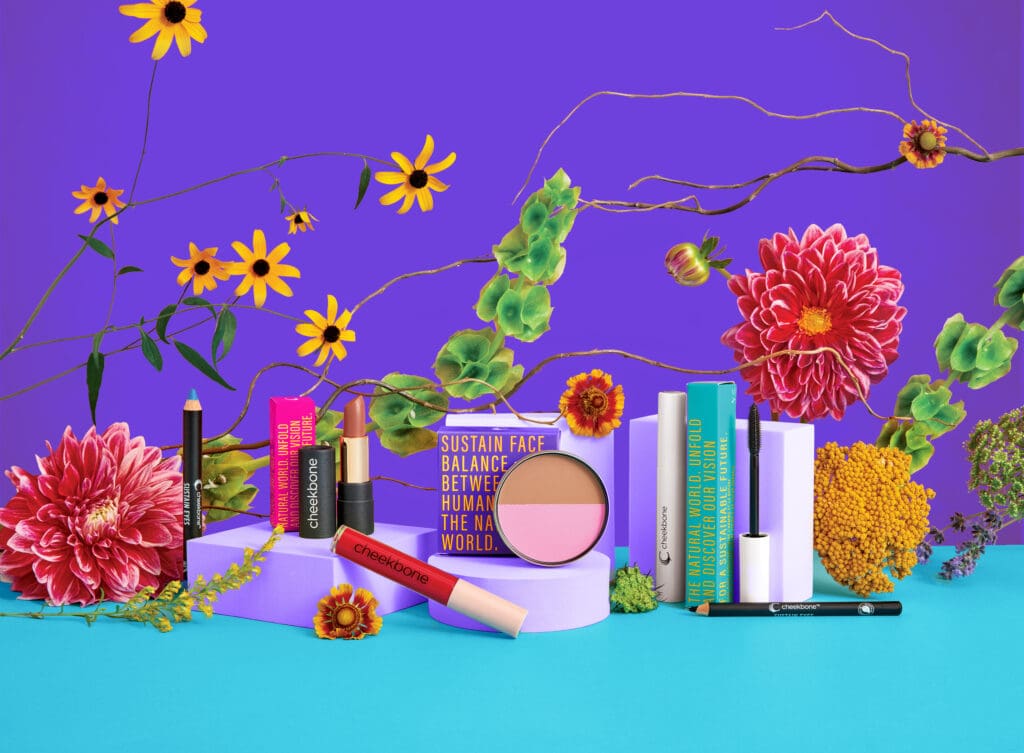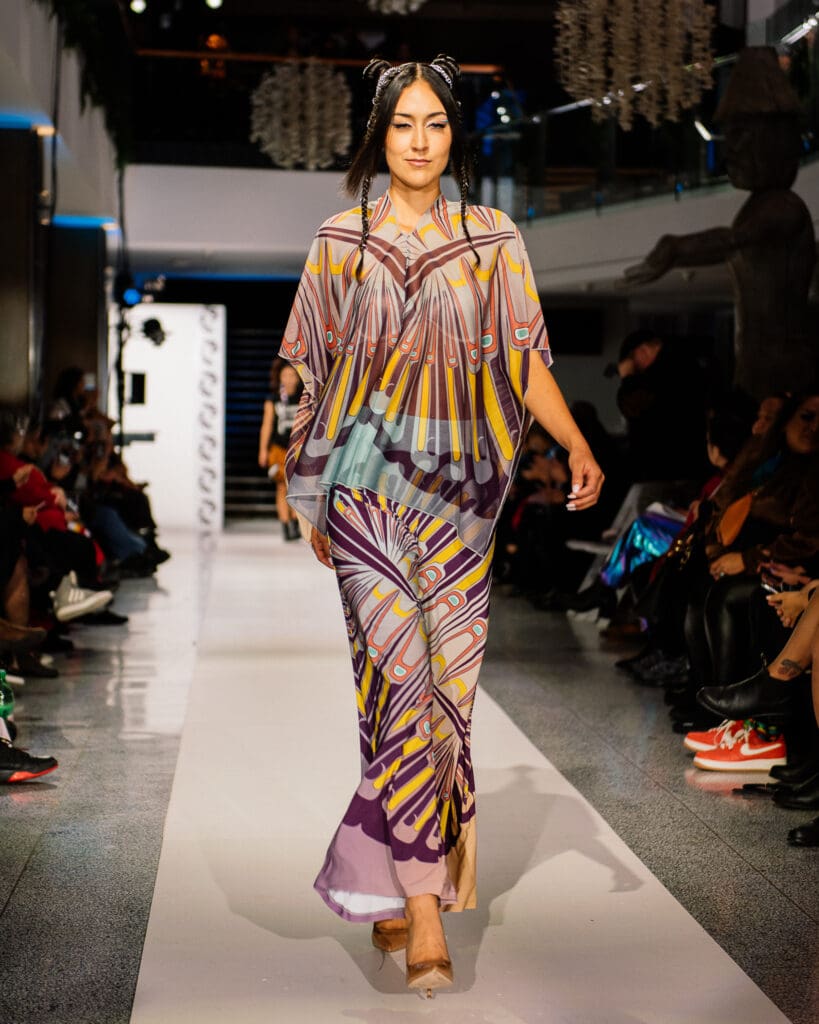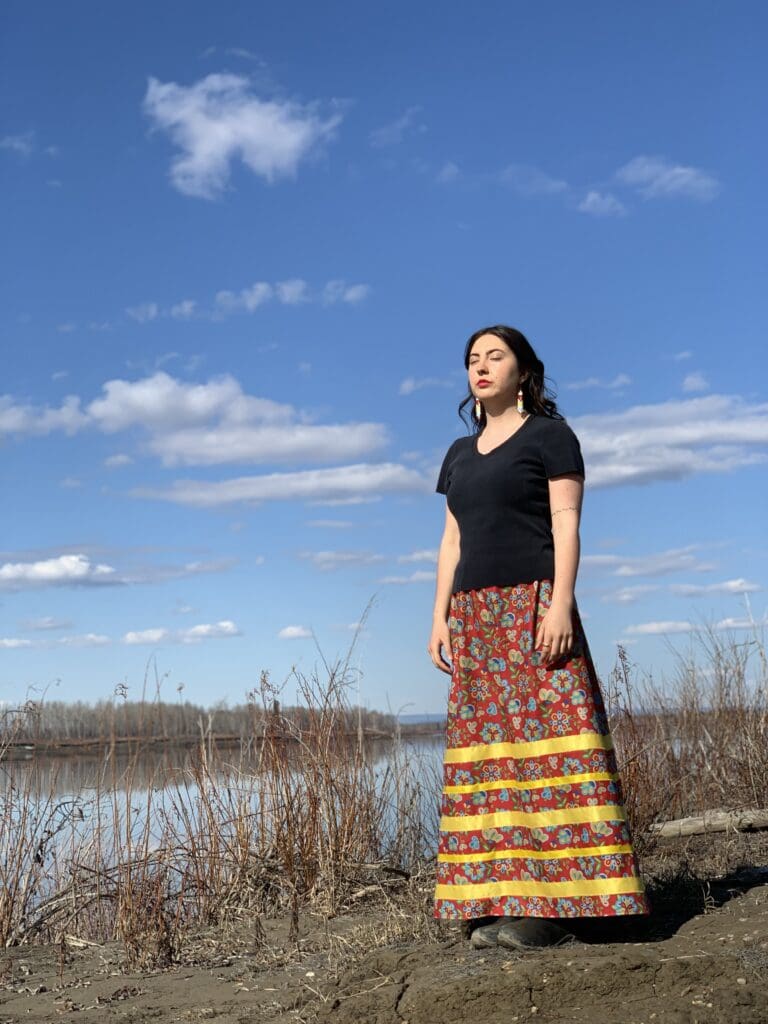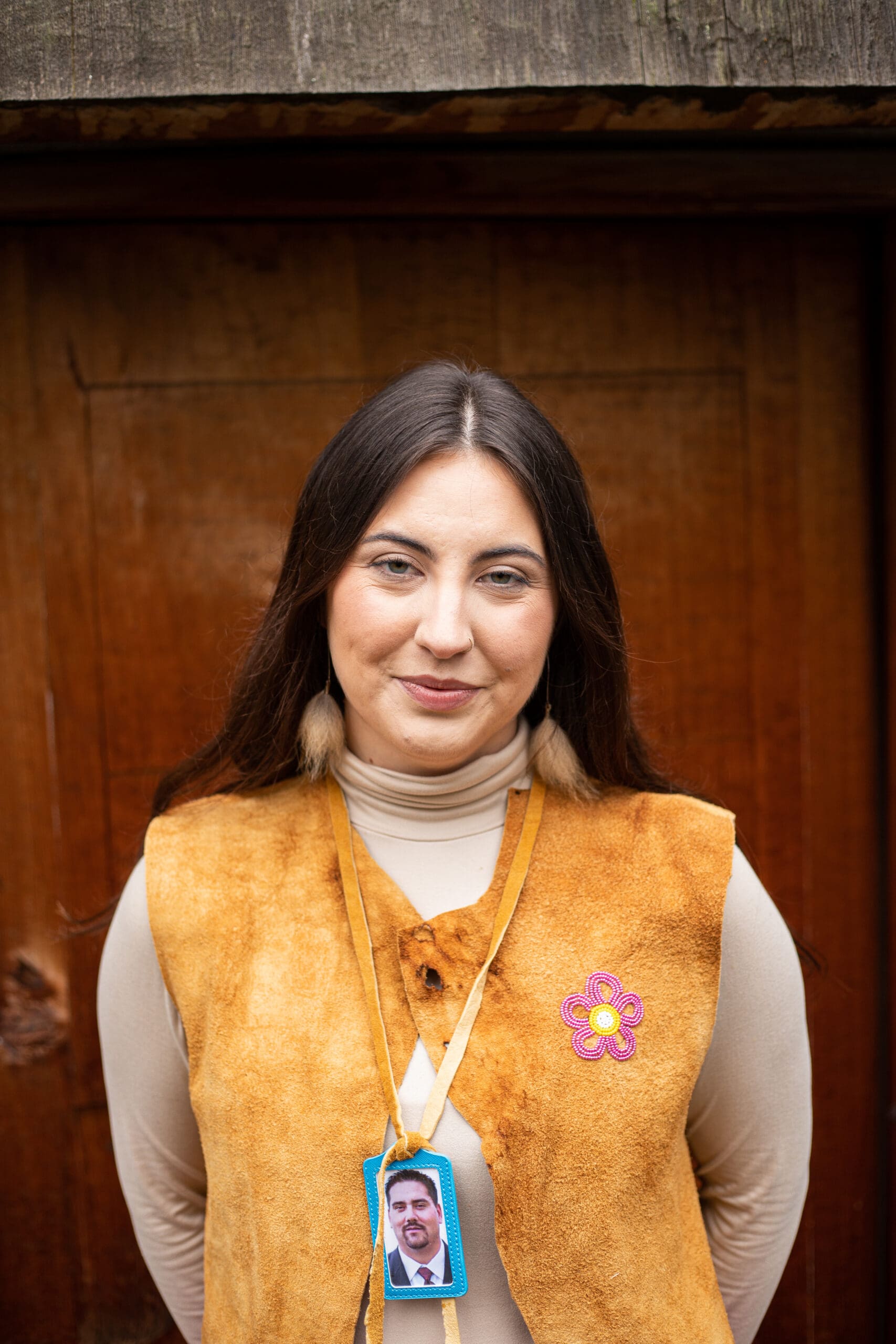In the beauty and fashion industries, the way forward may be found by looking back. Traditional Indigenous practices have always been guided by respect and connection to nature—long before “sustainable” became a buzzword. As Jenn Harper, Anishinaabe founder of cosmetics company Cheekbone Beauty explains, “If you look at our communities, for so long it’s our people that do so much of the front-line work in terms of advocacy for the planet. And the more I learn about my family, my culture, it’s truly innate.”

There’s no question: the beauty and fashion industries are ripe for change. The beauty industry is responsible for an estimated 120 billion units of packaging a year, globally—and most are not recyclable. The fashion industry is no better, claiming up to 10 per cent of the world’s carbon dioxide output. And since clean, sustainable beauty and fashion is having its moment, what can we learn from Indigenous knowledge and traditions for a more eco-conscious future?
Maria Wodzinska, co-founder of Stoic Beauty, agrees that Indigenous people are on the front line. She shares the stats: although only six per cent of the world’s population is Indigenous, they are stewards for 80 per cent of the planet’s biodiversity. “This suggests to us that Indigenous knowledge systems are better at sustainability than colonial knowledge systems,” she says. The brand is not Indigenous-led but does collaborate with a First Nations water protector to create skincare that is water safe, even after it’s been washed down the drain.
In conversations with Indigenous creators, grandmothers come up a lot. For many Indigenous populations, safeguarding the environment also means safeguarding future generations. Alexa Lizotte, the Métis artist behind the hand-beaded jewelry and traditional ribbon skirts at Desert Métis Creations, knows this teaching better than most. She’s seen her northern Métis and First Nations communities devastated by recent floods. “Seeing that it’s becoming a pattern has really opened up my eyes to the true effects of climate change,” she says.

Like many others, Lizotte’s own grandma was known for her ability to upcycle “every single thing.” Same with Pam Baker, who is of Squamish, Kwakiutl, Tlingit and Haida descent. “We use materials from the land, so we’ve always been taught to respect what we are using,” Baker says. “When I was growing up, my grannies and great-grand-aunts would take fabric from secondhand stores… and they would incorporate it into their dance blankets.” The designer and entrepreneur has worked in the fashion industry since the 1980s and co-produced 2022 Vancouver Indigenous Fashion Week. Today, Baker passes the traditions on. “The older designers, we attempt to reuse fabrics and recycle fabrics, bringing the past into the future.”
Older generations also pass their knowledge down, imparting younger family members with a skill or technique. At lifestyle brand Obakki—which is not Indigenous-led, but instead works with Indigenous artisans from all over the world to create jobs, income and opportunities—CEO Treana Peake says that many of their handmade wares are “the same craft that’s been handed down for generations.” The benefit of this traditional knowledge legacy is that it’s stood the test of time and considers the complexity of the surrounding ecological system. As Peake explains, it’s a “natural supply chain that considers all factors around them that protects the environment.”
It’s a holistic approach that’s innately eco-minded, as it accounts for the impact of production. But the designers and makers we spoke to pointed out that the lifecycle of a product should be considered, too. Skincare ingredients, textile fabrics and dyes, packaging and the product’s final resting place—all are considered. At Cheekbone Beauty, that means “sustainable, colour cosmetics that don’t end up in a landfill,” thanks to biodegradable packaging and refillable palettes. At Desert Métis Creations, it’s all about natural fabrics and dyes “that are coming 100 per cent from the land,” so they make minimal impact when they return there one day.

Indigenous people, and those who collaborate with them, are bringing eco-minded practices into the mainstream—but there is a catch. Wodzinska says that “knowledge traditions coming from traditional places [can] get completely obliterated by the force and speed of economics and consumerism.” So how can we, as consumers, create a more sustainable future?
Reducing our footprint is as easy as being mindful of what we buy—the fast-fashion antidote. Lizotte reminds us that “in this world where we can buy anything we want anywhere we want, double-think something that you might or might not need.” A sentiment echoed by Wodzinska, who suggests breaking down the never-ending cycle of seasonal trends. “Beauty and fashion can absolutely demolish its ideas of what beauty is because it isn’t one look. It isn’t a thing that’s fashionable this year and then not fashionable the next year.”
At Obakki, which has its own fashion line in addition to Indigenous crafts and wares, the small-scale capsule collections don’t follow “dictated fashion calendars.” Peake also acknowledges the complexity of sustainability—each situation and ecosystem is so unique and delicate, it’s difficult to predict the impact. Her solution is to continually check in on the people and the process. “It’s about having those conversations with people, finding out what’s important to them in a particular culture and region. It is that direct connection to the environment and really taking everything into consideration.”
There are plenty of lessons to be learned from Indigenous communities, so those conversations may be the most important step of all. Baker explains why all of us have something to learn from Indigenous people: “We’re survivors. It’s been a really tough road. And I feel that it’s time for mainstream society to see they can reach out and get some good tips from us.” Because let’s face it: to navigate climate change, we’re going to have to work together. —Jill Von Sprecken

Be the first to comment